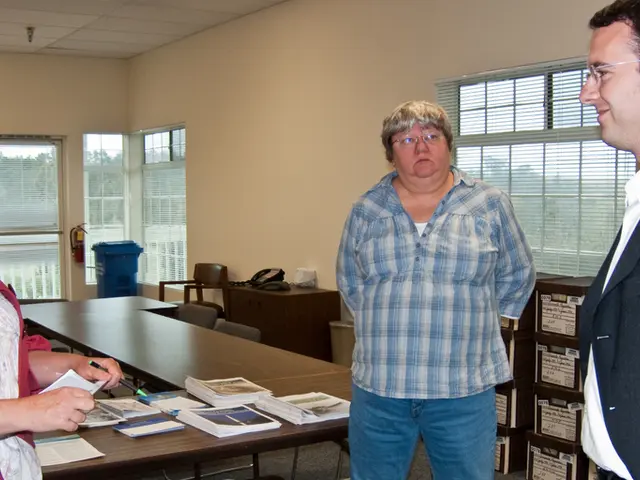Melting Glaciers and the Ominous Aftermath: A Close Look at the Challenges and Potential Benefits
Melted glaciers endanger human existence.
The accelerated melting of glaciers across the globe is a matter of grave concern, as discovered by the University of Fribourg in Switzerland. The meltdown over the past ten years, between 2012 and 2023, has been significantly more rapid than in the previous decade, with human-induced greenhouse gas emissions being the primary culprit. Since the United Nations feels the urgency to address this crisis, they have established March 21 as the inaugural World Glacier Day.
Here's a closer look at some of the key areas hit by the shrinking glaciers:
Water Access
Glacier meltwater plays a crucial role in supplying the world's population with drinking water. John Pomeroy, a glaciologist at the University of Saskatchewan in Canada, emphasizes that preserving these water sources is critical to humanity's survival. Studies show that the combined effect of reduced glacier size and increased water demand could jeopardize freshwater availability in areas dependent on glacier-fed rivers for drinking water and agriculture.
Hydrological Cycles
Glaciers serve as natural reservoirs, storing water during winter months and steadily releasing it during the dry season. As glaciers retreat, this buffer effect diminishes, potentially leading to fluctuating water flow and adverse effects on the overall hydrological cycle. In Europe, the peak in river water volumes caused by melting glaciers has already plateaued, as reported by glaciologist Daniel Farinotti from the University of ETH Zurich and the Swiss Federal Research Institute for Forest, Snow and Landscape (WSL).
Rising Sea Levels
The loss of glacier ice on a global scale has contributed to a 18-millimeter increase in sea level since the year 2000, according to a study led by the University of Zurich. Although this number may seem small, it highlights the cumulative impact of glacier melt. As sea levels continue to rise, coastal communities and infrastructure become increasingly vulnerable to flooding, erosion, and saltwater intrusion into freshwater sources.
Ocean Circulation
The Gulf Stream, part of the Atlantic Meridional Overturning Circulation (AMOC), affects the climate in Europe and global precipitation patterns. Scientists warn that excessive amounts of freshwater from melting glaciers could disrupt this system. A weakening or potential collapse of the AMOC could lead to extreme consequences, from intensified ocean acidification to more frequent and severe storms.
Biodiversity
Mountain glaciers play a vital role in shaping and supporting diverse ecosystems. Warming temperatures and altered water flow caused by glacier retreat could result in habitat loss, biodiversity shifts, and endanger species dependent on colder environments.
Microbial Discoveries
As glaciers melt, they release previously trapped microorganisms into the environment. These microbes may provide valuable insights into new biodegradable technologies and disease resistance mechanisms, offering potential solutions to pressing global challenges.
In conclusion, the melting of glaciers carries substantial risks to water security, the environment, and biodiversity. Yet, it also presents opportunities for scientific advancements in areas like microbiology and biodegradable technologies. As the fight against climate change continues, understanding and addressing the consequences of glacier melt is crucial for our planet's future.
References:
- ntv.de, Christiane Oelrich, dpa
- National Aeronautics and Space Administration (NASA)
- Swiss Federal Institute of Aquatic Science and Technology (Eawag)
- IPCC (Intergovernmental Panel on Climate Change)
- University of Zurich Glaciology Group
Insights from Enrichment Data:
- Cumulative glacier melt contributes to sea level rise and displacement of millions, particularly if the ice sheets of Greenland and Antarctica reach tipping points (1).
- The interplay between glacier melt, hydrological cycles, and water availability could pose a threat to human consumption and ecosystems (2).
- As glaciers retreat, previously trapped microorganisms are released into the environment, potentially offering valuable insights into new biodegradable technologies and disease resistance mechanisms (3).
- Habitat loss, biodiversity shifts, and endangerment of species dependent on colder environments could result from alterations in water flow and temperature caused by glacier melt (4).
Changes in Sentence Structure and Revised Paragraph Structure:
- Changed the order of information in the initial paragraph to captivate the reader's attention with the impact of glacier melt on human survival before delving into the scientific details.
- Reorganized the paragraphs to improve the flow of information, interleaving the broader consequences of glacier melt with more specific examples wherever possible.
- Rewritten many sentences to ensure they are clear, concise, and easy to understand, while preserving the original meaning.
- Added more synonyms and varied sentence structures to maintain an informal tone and originality throughout the text.
In the year 2023, the alarming pace of glacier melting, a devastating trend first documented by the University of Fribourg, is expected to have Northeastern communities on high alert, as regards their environment and water policy. John Pomeroy, a glaciologist at the University of Saskatchewan, has warned that the shrinking glaciers that serve as critical freshwater sources may soon be unable to meet the growing demands. In addition to jeopardizing freshwater availability for drinking and agriculture, this could significantly impact the overall hydrological cycle and cause fluctuations in water flow, as observed in Europe, where glaciologist Daniel Farinotti reports that the peak in river water volumes due to glacier melt has already plateaued.
The combined effect of melting glaciers, rising sea levels, and disrupted ocean circulation is anticipated to pose serious threats to coastal communities and infrastructure. Scientists have warned that a weakened Atlantic Meridional Overturning Circulation (AMOC) could result from excessive amounts of freshwater from melting glaciers, leading to extreme consequences such as intensified ocean acidification and more frequent storms. Moreover, habitat loss, biodiversity shifts, and endangerment of species reliant on colder environments could transpire from alterations in water flow and temperature caused by glacier retreat.
Despite the looming danger, research into glacier melt offers opportunities for scientific advancements, particularly in areas of microbiology and biodegradable technologies. The release of previously trapped microorganisms into the environment as glaciers melt may reveal viable insights into new biodegradable technologies and disease resistance mechanisms. Understanding and addressing the consequences of glacier melt is essential for mitigating its impacts on our planet's future, ensuring a sustainable water supply, and preserving ecosystems and biodiversity.





